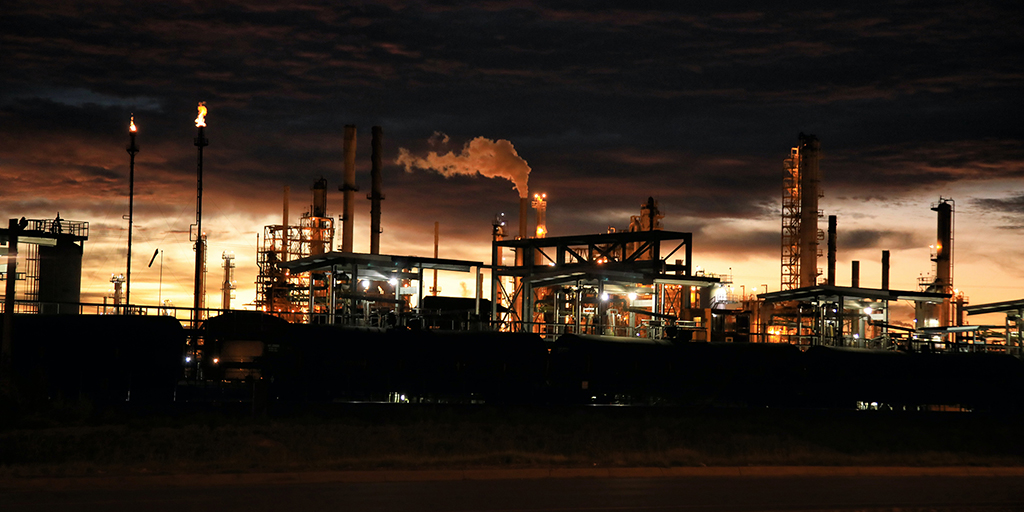In the bustling world of Oil terminal operations, where efficiency is the lifeblood of success, one challenge stands out amidst the machinery and logistics: inventory optimization. Oil terminal operators face a constant battle to efficiently optimize the utilization of their tank storage facilities while already dealing with critical issues, such as fluctuating demand, regulatory requirements, and other operational constraints.
The Terminal Inventory Analytics solution? Achieving the delicate balance between maintaining adequate inventory levels to meet demand and minimizing idle capacity. However, this is easier said than done, especially in Oil & Gas—a complex industry characterized by volatile market conditions and dynamic supply chains.
Storage Underutilization/Overutilization: How It Impacts Business
- Missed Revenue Opportunities – The underutilization of tank storage not only results in tanks sitting empty but also signifies inefficient resource allocation. When tanks remain idle, terminal operators miss out on potential revenue streams, limiting their ability to fully leverage their infrastructure and capitalize on market opportunities.
- Increased Operational Costs – The overutilization of tank storage increases operational costs associated with heightened maintenance and infrastructure needs. This can impact overall efficiency further escalating operational expenses, diminishing profitability, and hindering the terminal’s ability to operate competitively within the industry.
- Imbalances in Inventory Levels – Challenges in storage utilization also disrupt supply chain workflows, resulting in imbalances in inventory levels. These imbalances can lead to congestion and delays in product movement, increasing transportation costs due to inefficient allocation of resources.
- Bad Customer Experiences – Delays and inefficiencies in delivery caused by suboptimal storage utilization directly also hamper customer experiences. Perceived inefficiencies in storage management can tarnish the terminal’s reputation in the market, eroding customer trust and loyalty.
Real-Time Data Visibility: The Key to Efficiency in Terminal Operations
In the quest for optimization, real-time visibility emerges as a game-changer for terminal operators. By harnessing advanced data analytics and IoT technology, operators can gain invaluable insights into their storage infrastructure’s performance metrics, such as inventory levels, throughput rates, and tank utilization.
Real-time visibility empowers operators to make informed decisions on inventory management, scheduling, and resource allocation on the fly. With instantaneous access to critical data, they can identify underutilized assets, anticipate capacity constraints, and optimize workflows in real-time, thereby maximizing efficiency and profitability.
Customized Reporting: Tailoring Insights to Business Needs
Real-time visibility into operations alone is not enough. Terminal operators require actionable insights tailored to their specific operational requirements. This is where customized reporting comes into play. By leveraging data analytics platforms, operators can generate customized reports and dashboards that provide a comprehensive overview of their storage operations, from inventory trends to asset performance.
Customized reporting enables operators to track KPIs, monitor trends, and identify areas for improvement with precision. Whether it’s analyzing historical data to identify optimization opportunities or generating forecasts to anticipate future demand, tailored reporting equips operators with the tools they need to drive continuous improvement and stay ahead of the curve.
Predictive Analytics: Anticipating Opportunities
In the ever-evolving landscape of terminal operations, foresight is invaluable. Predictive analytics empowers terminal operators to move beyond reactive decision-making and proactively anticipate opportunities and challenges.
By harnessing historical data, machine learning algorithms, and predictive modeling techniques, operators can forecast demand patterns, identify market trends, and optimize asset allocation accordingly. Whether it’s predicting peak demand periods, optimizing tank allocation for specific product types, or identifying potential rental opportunities, predictive analytics enables operators to stay agile and capitalize on emerging market dynamics.
Optimize Storage Utilization with Contata’s Solution Accelerator
With over 2 decades of experience in the Oil & Gas space, Contata is familiar with the kind of challenges companies face in their day-to-day operations. By integrating our terminal dashboard and terminal inventory analytics solution accelerator into their operations, terminal operators can unlock valuable insights, drive operational excellence, and overcome various challenges inherent in terminal management effectively through:
- Demand Forecasting – Forecast demand fluctuations in advance to optimize inventory levels and minimize stockouts or excess inventory.
- Space Optimization – Identify underutilized areas in real-time and optimize tank storage allocation for efficient loading and unloading operations.
- Product Compatibility Assessment – Ensure product compatibility by analyzing chemical compositions and visualizing risk heatmaps to prevent contamination issues.
- Predictive Maintenance – Leverage predictive maintenance models to analyze equipment sensor data to optimize maintenance schedules, maximizing asset reliability while minimizing downtime and costs.
- Logistics Optimization – Analyze transportation routes and delivery schedules to minimize costs and reduce transit times, visualized on dashboards for real-time monitoring and decision-making.
- Market Analysis – Get latest insights into market dynamics, customer preferences, and competitor activities, enabling informed business decisions to maintain competitiveness.
Conclusion
The quest for tank optimization is a multifaceted journey that demands innovation, agility, and a data-driven approach. By embracing real-time visibility, customized reporting, and predictive analytics, terminal operators can unlock new levels of efficiency, profitability, and competitiveness in an increasingly dynamic industry landscape.
